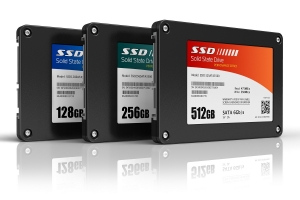Solid-State Drives (SSDs) have revolutionized data storage, offering significant performance and reliability advantages over traditional hard disk drives (HDDs). However, a recent spate of issues with the WD Blue 510 SSD has highlighted the importance of understanding SSD endurance and the potential risks associated with firmware problems.
White Paper: The Looming Threat: SSD Endurance and the WD Blue 510 Firmware Fiasco
Introduction
Solid-State Drives (SSDs) have revolutionized data storage, offering significant performance and reliability advantages over traditional hard disk drives (HDDs). However, a recent spate of issues with the WD Blue 510 SSD has highlighted the importance of understanding SSD endurance and the potential risks associated with firmware problems.
SSD Endurance: A Primer
SSD endurance is measured in Terabytes Written (TBW), which represents the total amount of data that can be written to the drive over its lifespan. While modern SSDs are designed to handle significant amounts of write operations, factors like workload intensity, temperature, and power cycles can impact their longevity.
The WD Blue 510 SSD Firmware Crisis
In late 2022, numerous users reported sudden and unexpected failures of their WD Blue 510 SSDs. These failures were often preceded by alarming SMART status warnings and unusual behavior. Investigations revealed that a firmware issue was the primary culprit, leading to data loss and system instability.
The Impact of Firmware Issues
Firmware, the software that controls the SSD's operation, is critical to its performance and reliability. A faulty or outdated firmware can lead to:
- Sudden Drive Failures: Without proper error correction and data management, the drive may become unresponsive or fail entirely.
- Data Corruption: Incorrect firmware can compromise data integrity, leading to file corruption or loss.
- Performance Degradation: Inefficient firmware can negatively impact read and write speeds, impacting system responsiveness.
Mitigating Risks and Proactive Measures
To safeguard your data and system performance, consider the following precautions:
- Monitor SMART Status: Regularly check the SMART status of your SSD using tools like CrystalDiskInfo or HDSentinel. Pay attention to attributes like "Total Writes," "Wear Leveling Count," and "Power-On Hours."
- Update Firmware: Keep your SSD's firmware up-to-date. Manufacturers often release firmware updates to address bugs and improve performance.
- Regular Backups: Implement a robust backup strategy to protect your data against unexpected failures.
- Choose Reliable Brands: Opt for SSDs from reputable manufacturers with a proven track record of quality and reliability.
- Consider Enterprise-Grade SSDs: For demanding workloads, enterprise-grade SSDs offer higher endurance and more robust error correction mechanisms.
Conclusion
While SSDs have significantly advanced data storage technology, it's essential to be aware of potential risks and take proactive measures to protect your data. By understanding SSD endurance, monitoring SMART status, keeping firmware up-to-date, and implementing regular backups, you can minimize the risk of data loss and system downtime.
References and Tools
- CrystalDiskInfo: A freeware tool for monitoring HDD and SSD health.
- HDSentinel: A comprehensive hard disk diagnostic tool.
- WD Support: Official support website for Western Digital products.
- Tom's Hardware: A popular tech news and review website.
- AnandTech: A leading technology review and analysis website.
- Reddit: A social news aggregation, web content rating, and discussion website.
Note: It's crucial to consult the specific documentation and recommendations provided by your SSD manufacturer for the most accurate and up-to-date information. Contact keencomputer.com for details.
